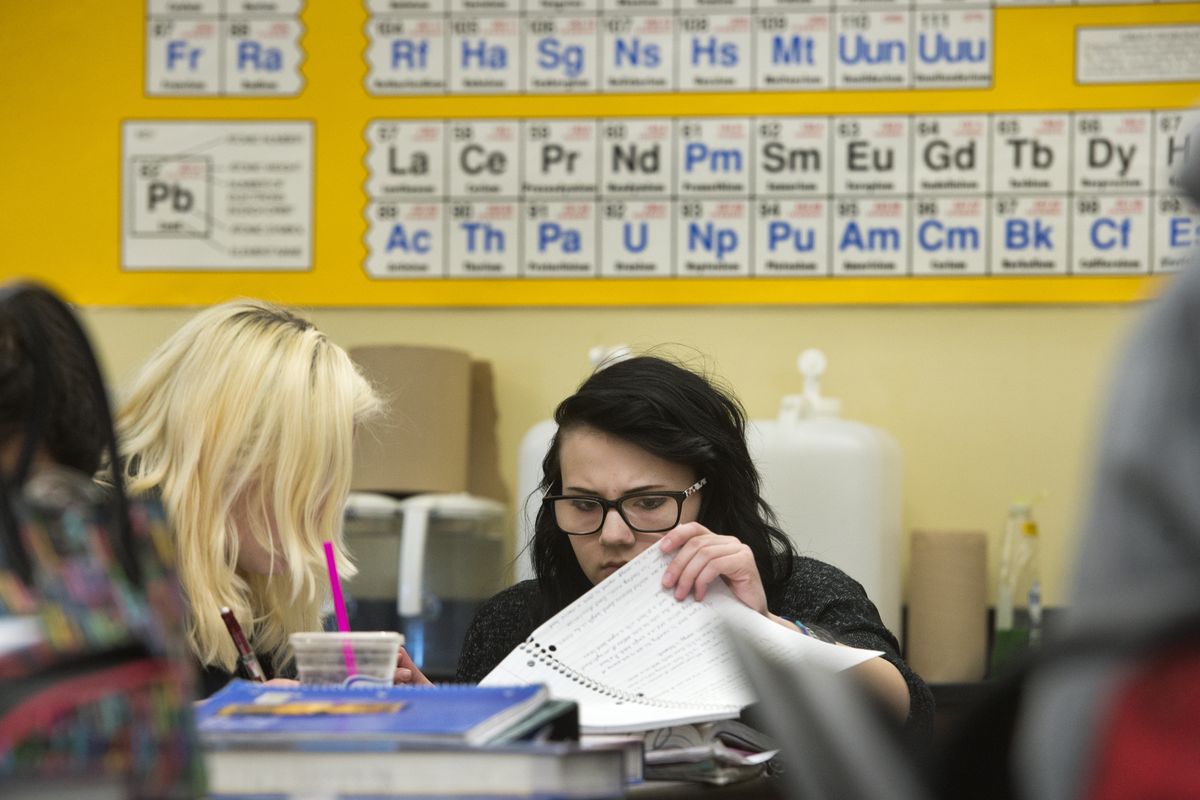Achievement, pride soar at Spokane’s Rogers High School

Graduation rates are up. Report card “F”s are down. Math scores are up. Fights are down. Attendance is up. Drug busts are down. Pride is up.
Success at Rogers High School, Spokane’s poorest, is soaring with the help of a multimillion-dollar federal grant that paid for academic help and stretched each school day by 30 minutes.
Rogers Principal Lori Wyborney said the money helped launch a transformation: Graduation rates rose 30 percentage points, and 62 percent of seniors had college-ready transcripts.
“Our grad rates will reach 90 percent. I have no doubt,” she said.
The Spokane high school is among hundreds of schools nationwide that received federal stimulus dollars during the recent recession. That $3.5 million grant to Rogers is now ending. The school was among the few that leveraged the cash into change, and school officials are determined to continue their efforts without the federal dollars.
The federal funds awarded to schools went out in two waves, 2009-10 and 2010-11. Rogers was in the latter group.

Math scores improved dramatically at Rogers, from 21 percent passing in 2010 to 74 percent in 2013; reading scores went up 6 percentage points.
The high school’s “gains in math and reading are significant,” said Diane Stark Rentner, deputy director of the Center on Education Policy. Many schools that received a grant improved by 2 percentage points on average, but data only reflects one year in some cases.
The increase in graduation rates is also impressive, Rentner said.
Rogers’ funds paid for two extra school days per year and 30 more minutes per day starting in 2011, the first year it received funds. The district hired an additional vice principal, academic specialists and mental health counselors.
“We do believe the extended time is the most beneficial for our kids,” Wyborney said. “When we surveyed the kids, they agreed.”
Students use the extra 30 minutes each day – called ROW time for Responsibility Ownership Willingness – to read, write or do math and meet with counselors or teachers regarding a specific issue or to get one-on-one help.
“There’s so many ways it benefits kids in poverty,” Wyborney said. “I’ve already told the superintendent we’d volunteer to be a yearlong school.”
The cost of the extra time each day is about $485,000 annually, school officials said. District officials have already included the item in next year’s budget.
“The board has shared with me its interest in wanting to continue to support Rogers and the work that they’ve been doing,” said Superintendent Shelley Redinger. “We’re real supportive of extending the school year, but it costs money.”
The grant also helped the school’s leaders “figure out what works and dive in deeper,” said Marty Robinette, an assistant principal. Wyborney said it also helped school officials identify community resources that could help the students be successful in school.
She noted some examples: A partnership with Hollister-Stier Laboratories in Spokane has resulted in equipment to support science classes; Northeast Community Center makes sure the school’s families know the center has health care and pharmacy support services; and Second Harvest Food Bank distributes food at the school.
Students’ success in math resulted from math teachers improving instruction and the addition of math coaches.
The school has gone from most students taking remedial math classes to most students working their way into pre-calculus, school officials said.
“You don’t get gimme grades at Rogers,” said Robinette. “We want to make sure a Rogers kid is as prepared as any kid in the district.”
As math excelled, reading and writing results were slightly improved. A schoolwide literacy program is being developed, which will add reading, writing and vocabulary into every class.
Two years ago, only 7 percent of the curriculum included literacy, Wyborney said. “It needs to be 100 percent in everything they do.”
None of this could have been done without teachers willing to put in the hard work too, school officials said.
“Schools that run well are led by teachers,” Wyborney said. “We are way ahead in that area.”
The bulk of the grant came the first year and then tapered off, helping the administration make do with less, Wyborney said. Meanwhile, the high school became eligible for additional federal funds when more than 75 percent of its students qualified for free and reduced-price lunches.
What Rogers has done with the federal grant is what the U.S. Department of Education had hoped would happen, said Andrew Kelly, an assistant superintendent in the state Office of Superintendent of Public Instruction.
“Rogers is a great example of when a school comes together around a single focus,” he said. “It’s a great success story for Washington and for Spokane.”